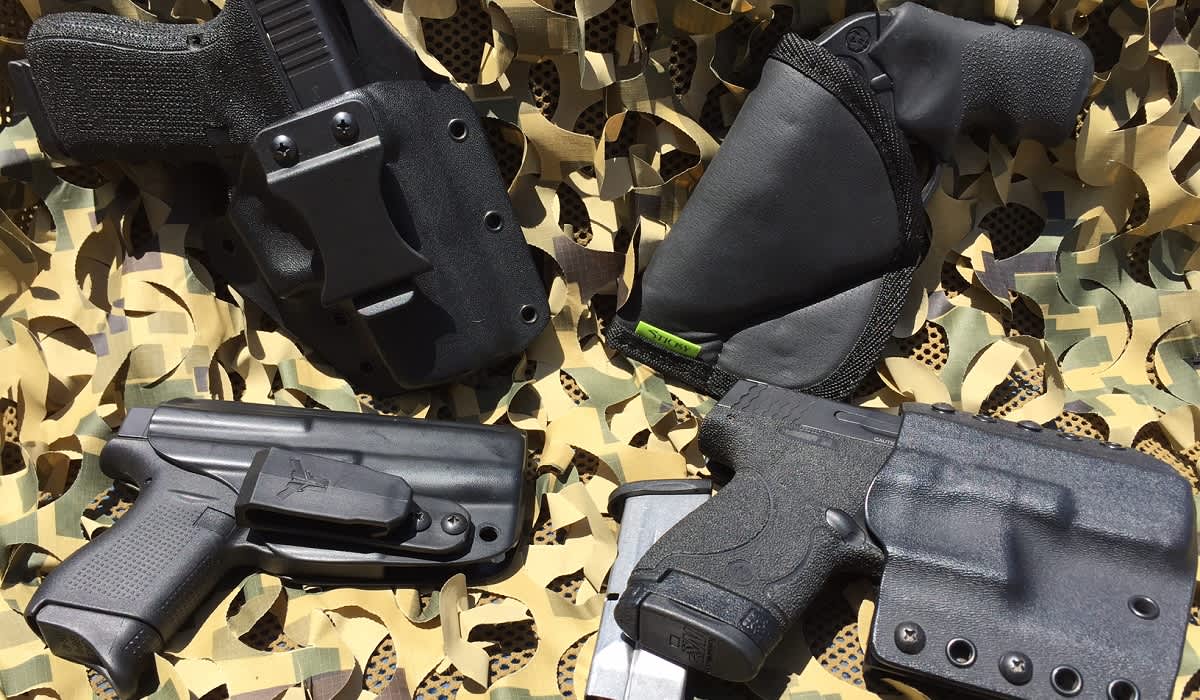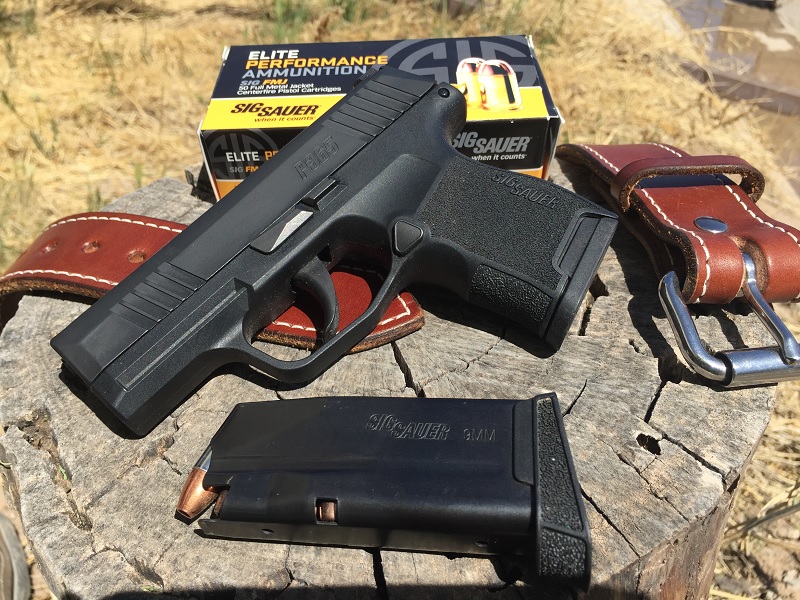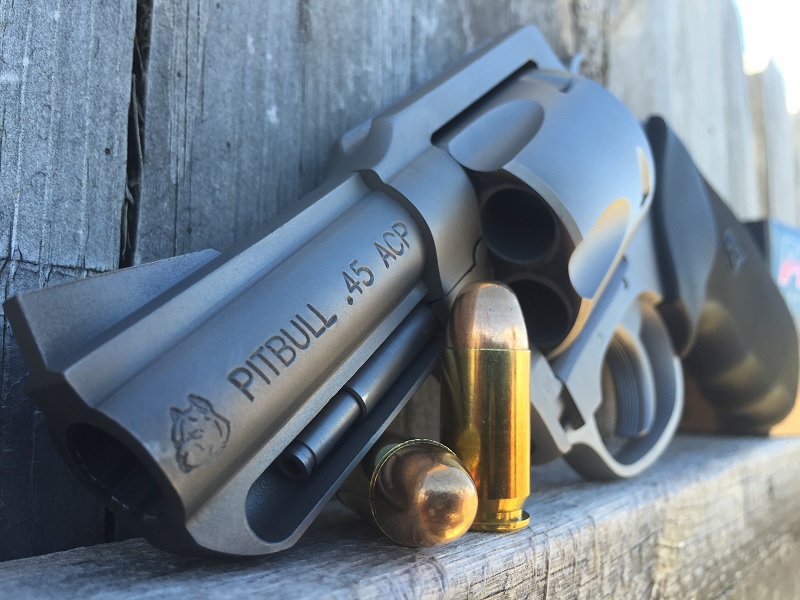Semi-Auto VS. Revolver: Pros and Cons for Concealed Carry
Terry Nelson 05.14.19

The choices for a concealment handgun today are most daunting. Caliber, double stack vs. single stack, night sights, and lasers are but a few of the considerations your facing if you are new to concealed carry. And then there is the age old question of, do I stick with a time-tested revolver or move into the modern era of semi auto handguns? Some of these key considerations are outlined below. My thoughts here are for practical everyday carry guns, not competitive, target, hunting or otherwise.
Semi Autos:

Although I started a career in law enforcement in about 1985, it wasn’t until around 1990 that carrying of a semi-auto duty gun was allowed in the agency I worked for. Prior to 1990 it was revolvers only. My first duty semi auto was a Sig Sauer P220, in .45 ACP. Over the years I have carried everything from double/single actions, the single action only (1911 platform) to the now ever popular striker fired platforms. Semi auto calibers I have carried for LE purposes have ranged from 32 auto, 380, 9mm, 40 S&W, 357 Sig and .45 ACP (the smaller of these for backup purposes only). I have seen a smattering of 10mm’s carried as well. Let’s take a look at the pros and cons of the semi auto.
The pros:
Concealability: As with the revolver, the small- to mid-frame semi autos are very concealable with the right holster systems. Generally speaking, the semi auto allows a person to carry a larger frame handgun as compared to the revolver.
Reliability: Today’s semi autos, although more problematic in some cases than the revolver, are very reliable. Most all well-known manufacturers’ models demonstrate excellent reliability in my experience, especially the striker fired systems.
Caliber offerings: Wide and diverse to meet the EDC needs of everyone.
Weight: Today’s striker fired autos are all lightweight material and there are a wide variety of choices to fit every person’s needs.
Magazine capacity: A double stack, sub compact or compact semi auto has double to triple the round count of the revolver. The Sig 365 and the new Glock 43X are very concealable and offer 10 plus round capacity in a very small package. Worth considering!
Add-ons: Although the revolver does have some options here, I believe the autos have an edge for choices in the area of mounted light systems, lasers, night sights and part upgrades.
Affordability: At the lower end starting around $300 to $350, autos are competitive with the revolver category in cost.
The cons:
Operation: For those just starting out, the basic operation of the auto can seem formidable. From locking the slide back to loading ammunition in the magazine, it can seem a bit of a challenge. Get with a qualified trainer and you will overcome these obstacles in no time.
Malfunctions: Yes, I know this relates to reliability. Many folks have experienced a malfunction while shooting a semi auto. Most are related to magazine issues, ammo, maintenance, or shooter error. There is a reason Glock and other striker fired systems are so reliable and popular by police and military today.
Revolvers:

When I first started my law enforcement career in 1985 few law enforcement agencies in the state utilized semi auto for patrol officers. If the semi auto pistol was carried by LE in those days it was almost always the classic 1911 45 ACP. All of my early handgun training for defensive purposes revolved (no pun intended) around a S&W Revolver in 357 magnum (the 44 magnum was carried by some). Also at the time, little consideration was given to things like recoil and the fit of the gun to an officer’s hand–if you were a cop you qualified on what they told you and either passed or failed. So I learned the revolver well, to include speed and tactical reloads and distance shooting. Very few of these skills are adopted today by the average person carrying a revolver, because so few carry one or choose to not train.
As I see it, there is a time and place for this action type. I have used almost every well-known make and model of revolver that’s commonly seen today. Let’s take a look at the pluses and minuses.
The pros:
Concealability: Select a small frame, i.e., 2 to 3 inch barrel, and this gun can be easily and effectively concealed. For example, Kimber offers the K6S six shot (38spl/.357mag) in a 2 inch barrel and a width of only 1.9 inches, making it very easy to conceal and carry.
Caliber offerings: The old standby 38 special is a classic and probably the most common. But many of the rimless semi auto offerings are now available, including 32, 9mm, 40 S&W, and 45 ACP. Charter Arms offers a revolver, named the Pit Bull that works with rimless calibers without the use of moon clips.
Reliability: Although malfunctions can occur they are rare. The revolver is generally very reliable and durable for EDC. Suffice it to say the higher quality built revolvers tend to be less problematic.
Weight: With the advent of lighter materials being used for small frame revolvers, weight is seldom an arguing point. The S&W Airweight for example weighs less than a pound.
Affordability: Many well-known companies are making good revolvers. Selections start in the $350 dollar range and go up from there.
The cons:
Trigger pull: For some, a double action trigger pull on a revolver is a drawback. With the average DA coming in around at 10 to 12lbs, it can be a challenge for folks with grip strength challenges. I recommend only firing a revolver in double action for defensive purposes even though many folks want to “cock the hammer”. As most of you know some revolvers have the hammer bobbed or shrouded where you are unable to cock it.
Reduced round capacity: The average carry revolver has a capacity of five to six rounds. Will you carry a speed loader or a speed strip as an extra ammo source?
Short sight radius: There’s little room for error when shooting snub nosed revolvers past three to five yards. In addition, rear sights are often very minimal on small revolvers. This same issue exists on some semi autos as well.

No doubt there are other pros and cons for both revolvers and semi autos. Recoil is one I hear most often discussed for both categories when I instruct today. In reality recoil can be managed with proper grip, good training and some consideration to caliber and ammunition selection.
I feel there is a place for either system in your daily concealed carry selection, depending on everything from the weather to your attire and confidence/skill level. In the end, what it comes down to is what you are most confident with, which system is most reliable for you and what gun you can carry comfortably. Then your determination to train and keep training!

